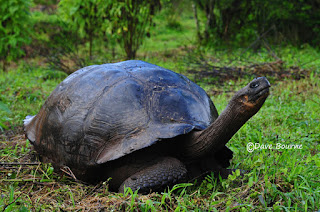The Galapagos Islands are located 600 miles west from the coast of Ecuador, directly on the equator. The group consists of 15 main islands, 3 smaller islands and 107 rocks and islets. The archipelago is located on the Nazca Plate which is moving southeast diving under the South American Plate at a rate of 2.5” per year.
The islands are geographically young and famed for their endemic species and were formed only 5 million years ago. They are spread over a distance of 137 miles and cover 3,000 sq mi of land spread over 17,000 sq mi of ocean. Fernandina is the youngest and best preserved island in the world. The most recent volcanic eruption was in April 2009.
In 2011 we spent two weeks on a small, chartered boat with twenty other photographers cruising the Galapagos Islands. It was a terrific trip moving from island to island exploring the vast and unbelievable wildlife.
The Galapagos Islands first appeared on maps around 1570. The islands were named “Insulae de los Galapegos” (Islands of the Tortoises). The first English captain to visit the islands was Richard Hawkins in 1593 and until the early 19th century was used as a hideout by English pirates who pilfered Spanish galleons carrying silver and gold from South America to Spain. The first crude navigation chart of the islands was done by buccaneer Ambrose Cowley in 1684.
The 1800’s brought an influx of whalers and fur seal hunters who would also capture the tortoises to extract their fat. The tortoises were kept on board as a means of providing fresh protein, as these animals could survive on board for months without food or water.







No comments:
Post a Comment